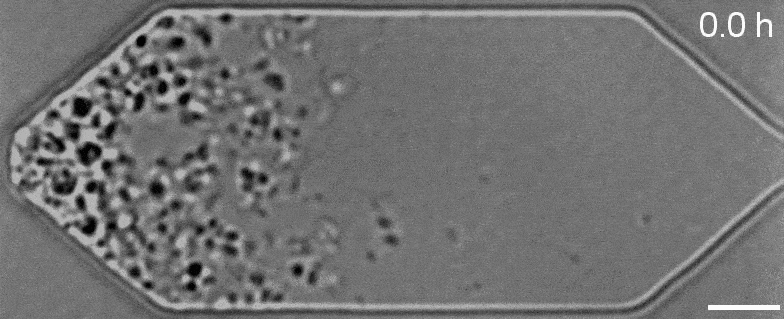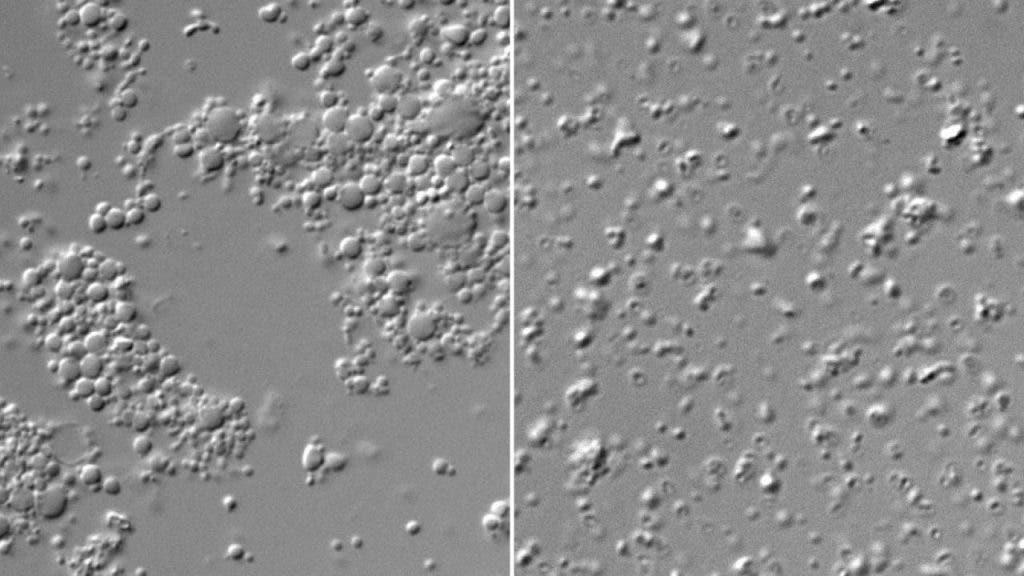
This is the first time that the cell division cycle has been mimicked successfully in an artificial cell, marking a breakthrough in synthetic biology.
From the ground up
Since they were first discovered in 1665 by Robert Hooke, cells have always fascinated scientists. In time, as our tools and knowledge refined, we’ve zoomed in closer and closer into the inner working and structure of biological cells.
Now, scientists want to cross the boundary to the next frontier: making their own cells from scratch.
Artificial or synthetic cells are essentially biological cell imitators. They’re built from cell-like structures which exhibit some of the key characteristics of living cells.
These artificial cells could prove useful in fields from medicine to the environment. For instance, they can serve as biological sensors or drug-delivery platforms that release medicine based on biological cues. And if scientists can make fully functional artificial cells and get them to assemble together into a complex, living organism, that would ultimately mean recreating the origin of life. Goes without saying, that’s a pretty big deal!
But let’s not get too ahead of ourselves. Before scientists can aspire to make life from scratch out of inanimate particles, there are some intermediate steps that need to be taken. One such major step forward was recently reported by teams at MIT, the J. Craig Venter Institute (JCVI), and the National Institute of Standards and Technology (NIST), which created a synthetic cell that divides like a natural one.
This is the culmination of breakthrough research that first started in 2010 when scientists at JCVI reported the first synthetic bacterial cell, known as CVI-syn1.0, with an entirely synthetic genome. Five years ago, JCVI researchers took things a step further, creating a bacteria with a genetic code smaller than any found in nature. This structure, called JCVI-syn3.0, had a genome comprised of only 473 genes, making it the simplest living cell ever known.
Obviously, JCVI-syn3.0 wasn’t perfect. While it could grow and divide, the sister cells it produced varied wildly in different shapes and sizes. Natural cells divide uniformly and predictably, which is why biological cells in nature are incredibly stable.

Turns out some key genes were missing. In a new study published in Cell, researchers led by Elizabeth Strychalski, leader of the Cellular Engineering Group at the National Institute of Standards and Technology (NIST), revisited the JCVI-syn organisms. Like those before it, they first stripped the natural DNA from a bacterium — in this case, the sexually transmitted microbe Mycoplasma genitalium. Into this scaffold, the researchers inserted the genome for JCVI-syn3A, a new synthetic genome that contains a total of 492 genes.
That’s still a super-small genome. For comparison, the E. coli bacteria that live in your gut have about 4,000 genes, while a human cell has around 30,000.
Among these newly added genes are seven genes that we now know are critical for normal cell division. But before they could have the cells divide, the researchers had to first keep them alive.
This was challenging due to synthetic cells being so small and delicate — a hundred or more would fit inside a single E. coli bacterium. To solve this problem, the scientists keep the cells in a high-tech microfluidic chemostat, which is a sort of mini-aquarium where cells are constantly being fed just the right amount of nutrients, water, and light.
This chemostat setup also allowed the researchers to film the cells. In one recording, you can clearly see JCVI-Syn3A cells dividing into cells of more uniform shape and size than previous generations. This is how they ultimately knew that the genes they added did the right job.
“We want to understand the fundamental design rules of life,” said Strychalski. “If this cell can help us to discover and understand those rules, then we’re off to the races.”
In the future, Strychalski and colleagues want to unravel the function of every gene in order to develop a complete model of how a cell works. But this goal is still many, many years away. “Life is still a black box,” Strychalski said.


